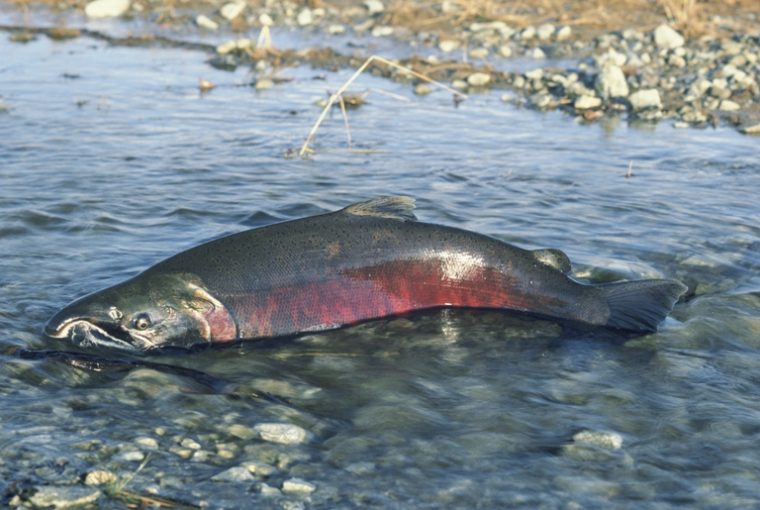Why Did the Salmon Cross the Road?
A shoal of determined salmon recently crossed flooded Washington roadways to complete their yearly salmon run

Something about this story seems a little “fishy”
Photo:Bureau of Land Management
Every year, salmon make an incredible journey to their respective spawning area in an event known as the salmon run. Along the way, these salmon encounter a number of obstacles, both natural and unnatural.
One shoal of chum salmon recently encountered one of these unnatural obstacles. After the Skokomish River in Washington flooded, a number of salmon were seen crossing the highway.
Plan an Epic Journey of Your Own: Take a wild adventure on Chevy’s 48-state road trip
Several groups of salmon enter the Skokomish River via the Hood Canal. When excess rain causes the river to flood, some of these salmon can be rerouted to a “shortcut” across Washington’s various roads and highways.
“It’s always kind of a shock to see a nine- or 10-pound salmon crossing the road,” says Aaron Dufault, a salmon policy analyst at the Washington Department of Fish and Wildlife.
You can view the salmon crossing the highway in the video below:
This phenomenon isn’t an uncommon one either. Excess precipitation is quite common in areas of Washington during the salmon spawning season, meaning that chum salmon splash across the open roads of Washington year after year.
While many of the salmon that cross the road are likely to be struck by cars, Dufault says this won’t hurt the chances of the species as a whole. The streams that settle across the roadways are just one of many paths that lead to the final destination of the salmon’s journey, meaning more of their species are likely to make it.
Of course, there are factors that are actively threatening the future of the salmon population. Indeed, one species of salmon that travels through the Hood Canal are listed as “threatened” by the National Oceanic and Atmospheric Administration.
Considering Fish This Thanksgiving?: Substitutes for Thanksgiving turkey
Even the salmon that successfully complete the salmon run are not long for this world. Pacific salmon species die shortly after breeding.
Still, completing the run ensures the future of their species. After the new salmon hatch and head out to the ocean, they will eventually make the same salmon run to the place where they were born. Thus, the salmon circle of life continues.
News Source: National Geographic, Storyful Rights Management, Gizmodo
Zachary Berry currently resides in the Dayton, Ohio area. However, he enjoys traveling from place to place, as he was born in Oklahoma City and has also lived in Albuquerque and Orlando (such is the life of a military brat). Zachary graduated from Ohio University with a major in Strategic Communication, which is fancy talk for advertising and public relations. Beginning his career at The News Wheel as a lowly intern, he was able to climb his way to the top, eventually claiming his place within the last cubicle on the left. Other jobs that Zachary has held include driving around a safari truck at Disney’s Animal Kingdom. When he’s not putting his nose to the grindstone, Zachary enjoys watching and critiquing movies and television. See more articles by Zachary.


